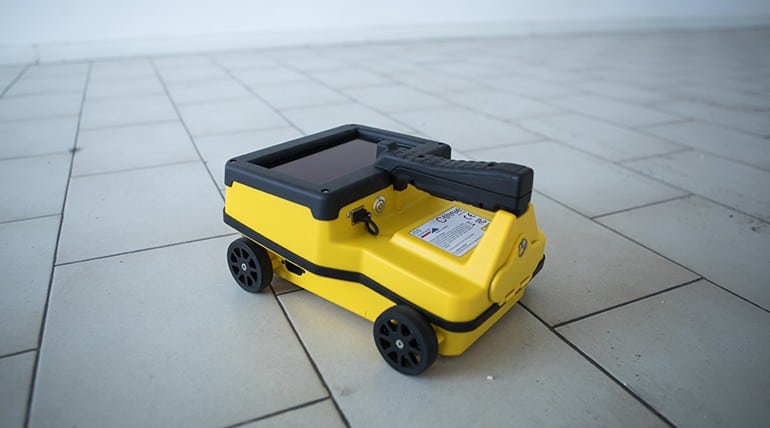
What is a Concrete Scanner?
A concrete scanner is a powerful tool used in construction and engineering to assess the condition and properties of concrete structures. It is designed to provide accurate and detailed information about the internal composition of concrete, such as the presence of reinforcement bars, voids, cracks, and other defects.
Concrete scanners utilise various technologies such as ground-penetrating radar (GPR) or electromagnetic waves to penetrate the surface of the concrete and capture data about its internal structure. This data is then processed and analysed to create visual representations or 3D models that help professionals make informed decisions regarding repairs, renovations, or new construction projects. Find out more about our concrete scanning services.
Applications
REBAR DETECTION: Concrete scanners can detect the presence, location, and depth of reinforcement bars (rebar) within concrete structures. This information is crucial for construction and renovation projects to avoid damaging rebar during drilling or cutting.
VOID DETECTION: They can identify voids, air pockets, or areas of poor consolidation within the concrete, which can compromise the structural integrity of the material.
CONDUIT AND PIPE LOCATION: Concrete scanners are used to locate and map the positions of electrical conduits, plumbing pipes, and other utilities embedded within concrete slabs or walls.
THICKNESS MEASUREMENT: They can measure the thickness of concrete sections, helping assess the structural integrity of the material.
BRIDGE AND ROAD INSPECTION: Concrete scanners are used to inspect the condition of bridges, roads, and other concrete infrastructure for signs of deterioration or damage.
Non-Destructive
By using a concrete scanner, engineers and surveyors can identify potential issues within concrete structures without causing any damage. This non-destructive testing method saves time, reduces costs, and enhances safety by providing valuable insights into the integrity of the concrete.
In Summary
A concrete scanner is an essential tool for gaining accurate information about the condition of concrete structures. Its ability to detect hidden defects helps ensure structural integrity and enables efficient decision-making during construction projects.
Back to FAQBack to FAQ